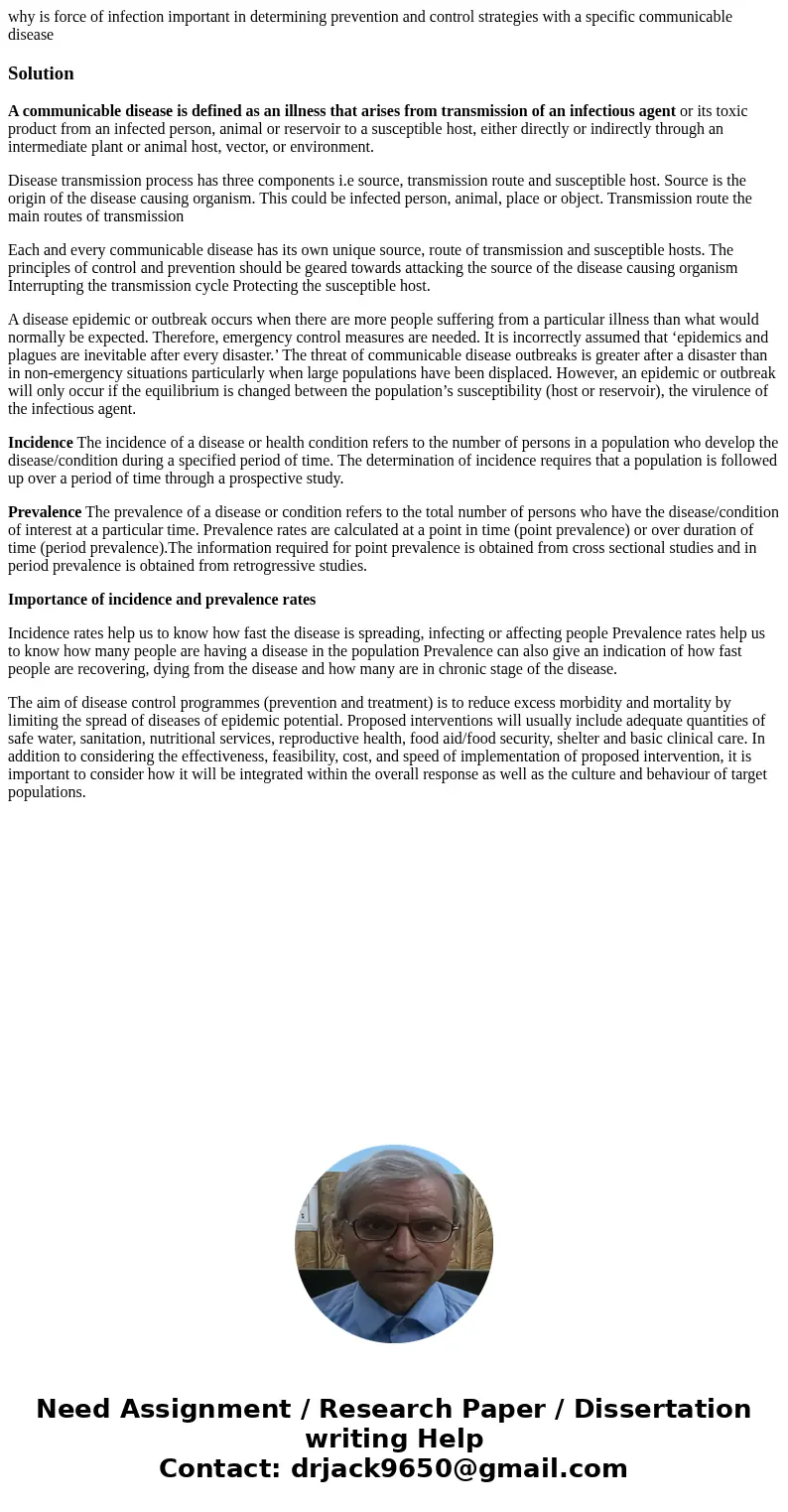why is force of infection important in determining preventio
why is force of infection important in determining prevention and control strategies with a specific communicable disease
Solution
A communicable disease is defined as an illness that arises from transmission of an infectious agent or its toxic product from an infected person, animal or reservoir to a susceptible host, either directly or indirectly through an intermediate plant or animal host, vector, or environment.
Disease transmission process has three components i.e source, transmission route and susceptible host. Source is the origin of the disease causing organism. This could be infected person, animal, place or object. Transmission route the main routes of transmission
Each and every communicable disease has its own unique source, route of transmission and susceptible hosts. The principles of control and prevention should be geared towards attacking the source of the disease causing organism Interrupting the transmission cycle Protecting the susceptible host.
A disease epidemic or outbreak occurs when there are more people suffering from a particular illness than what would normally be expected. Therefore, emergency control measures are needed. It is incorrectly assumed that ‘epidemics and plagues are inevitable after every disaster.’ The threat of communicable disease outbreaks is greater after a disaster than in non-emergency situations particularly when large populations have been displaced. However, an epidemic or outbreak will only occur if the equilibrium is changed between the population’s susceptibility (host or reservoir), the virulence of the infectious agent.
Incidence The incidence of a disease or health condition refers to the number of persons in a population who develop the disease/condition during a specified period of time. The determination of incidence requires that a population is followed up over a period of time through a prospective study.
Prevalence The prevalence of a disease or condition refers to the total number of persons who have the disease/condition of interest at a particular time. Prevalence rates are calculated at a point in time (point prevalence) or over duration of time (period prevalence).The information required for point prevalence is obtained from cross sectional studies and in period prevalence is obtained from retrogressive studies.
Importance of incidence and prevalence rates
Incidence rates help us to know how fast the disease is spreading, infecting or affecting people Prevalence rates help us to know how many people are having a disease in the population Prevalence can also give an indication of how fast people are recovering, dying from the disease and how many are in chronic stage of the disease.
The aim of disease control programmes (prevention and treatment) is to reduce excess morbidity and mortality by limiting the spread of diseases of epidemic potential. Proposed interventions will usually include adequate quantities of safe water, sanitation, nutritional services, reproductive health, food aid/food security, shelter and basic clinical care. In addition to considering the effectiveness, feasibility, cost, and speed of implementation of proposed intervention, it is important to consider how it will be integrated within the overall response as well as the culture and behaviour of target populations.

 Homework Sourse
Homework Sourse